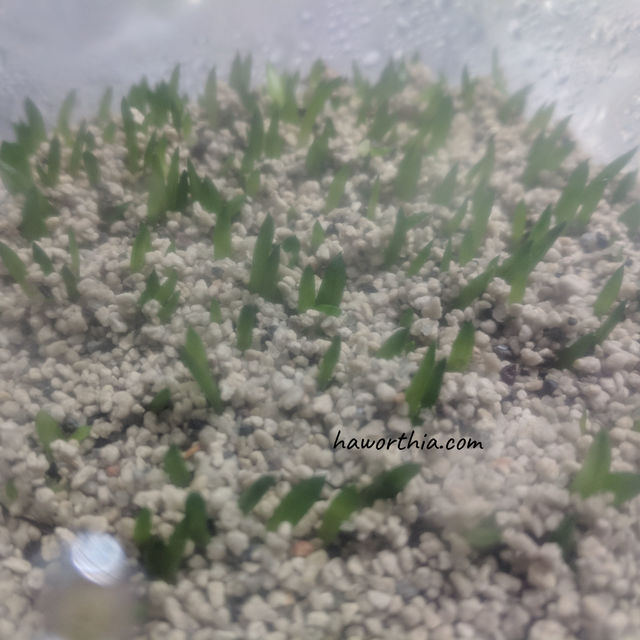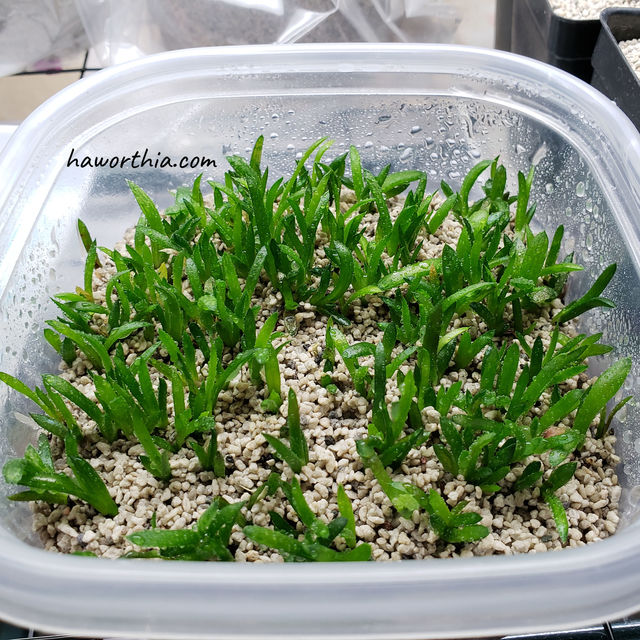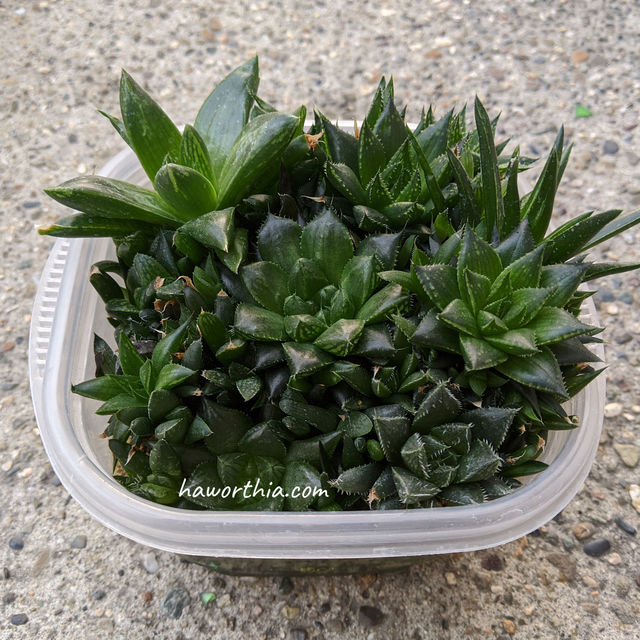Germinating Seeds
Haworthia seeds are best germinated within 6 months after harvest. The shorter the wait, the more active the seeds are, and the higher the chance of success. Before germinating, it is important to make sure the temperatures will stay moderate for the next ~2 months (often in spring or fall).
The germination medium should be much more water retentive than the normal growing medium. Besides, its particle sizes should also be smaller for newly developed roots to better elongate. In Northern California, I use vermiculate which contains no organics to reduce the chance of fungus infection.
Sterilize the Medium
Sterilization reduces the chance of fungal growth in high humidity needed by germination. First moist the medium, put it in an oven-safe container and bake at 80~100° C for >30 minutes.
To sow the seeds, fill at least ~3 cm of the germination medium in a clean container. Sow the seeds on the surface and further cover them with a thin layer of the medium. Soak the container in the fertilizer solution for ~1 day, while keeping the container covered to prevent pests (for example, fungus gnats) from hatching eggs. After that, spray the surface with a mix of the fertilizer solution and some fungicide (for example, Thiophanate-methyl). Seal it in a clear plastic bag (for example, a storage bag). This will put the seeds in a fully saturated humidity. Put the container in a bright place without direct sunlight. The first seeds will germinate in ~1 week and the germination goes on during the next weeks. The sealed container should be periodically inspected for fungus affection or leakage of moisture. If any fungi are observed, take the container out immediately.
How to Sow Seeds Evenly
Mix the seeds with a small amount of germination medium. Shake the mix well and lay it down. The result is often satisfying.


After ~2 months, the seedlings will develop a few leaves and can be taken out and exposed to the open air gradually. Put a layer of the normal (or heavier) growing medium on top of the seelding medium to help stabilize the young seedlings when watering. The seedlings should be watered more frequently than mature plants initially to adapt to a drier environment. The watering frequency can be gradually reduced to normal in the next ~1 month as the seedlings grow. Watering should be done gently (for example, by either spraying or soaking) to avoid strike down the seedlings. After ~6 months, the seedlings will be mature enough and can be transplanted to the regular growing medium.

